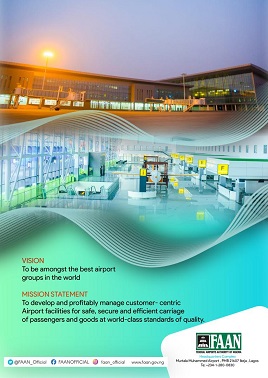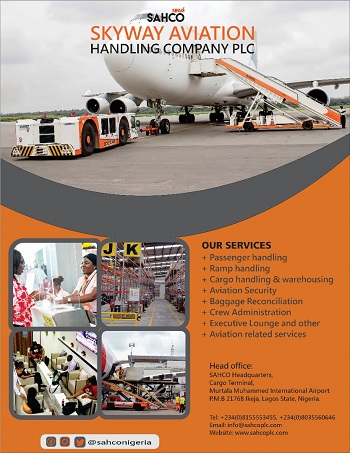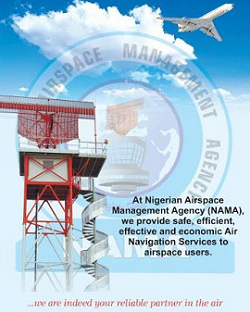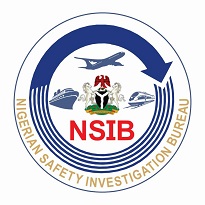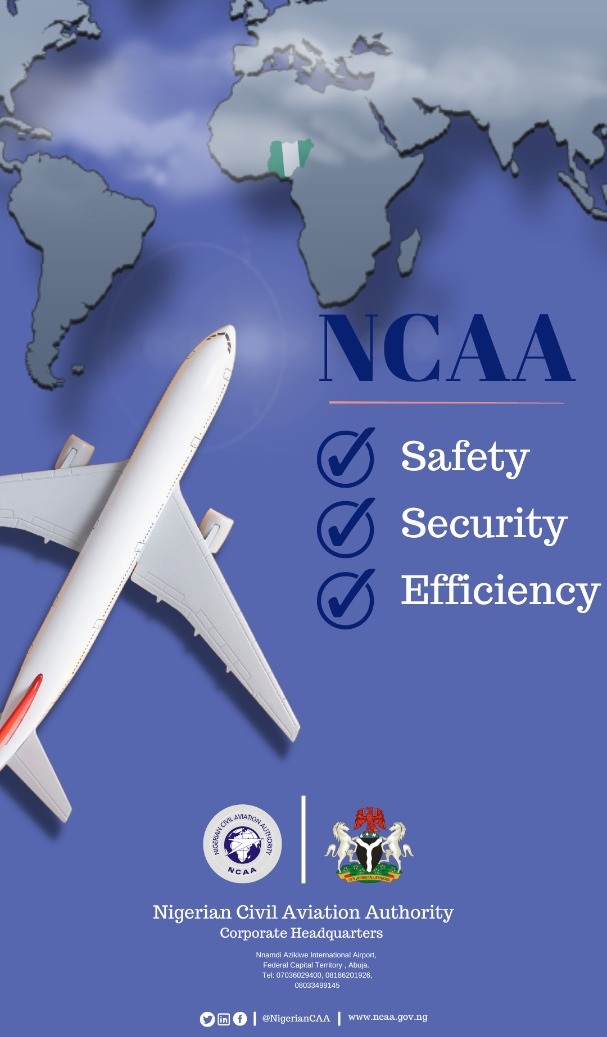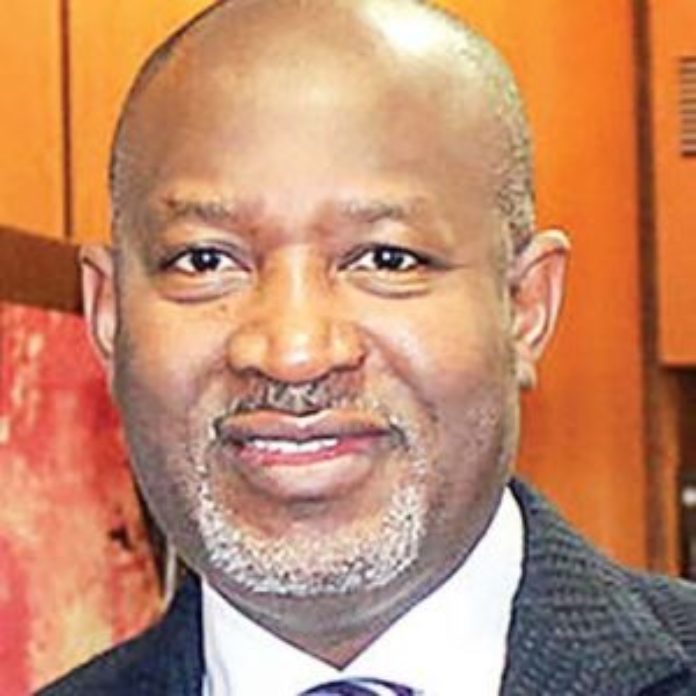
Minister of State, Aviation
…sheds more light on dark areas
Contrary to the belief that the federal government is going to commit $300million as its 5 percent equity to the floating of the proposed new national carrier, Minister of state, Aviation, Senator Hadi Sirika said the five percent is going to be total equity of the Federal Government in the project after the airline has come to full operations. Sirika also makes some clarifications to shed more light on what the federal government has done, doing and intended to do on the floating of the new airline for the nation after the recent unveiling of its logo and name at Farnborough Airshow in London.
Excerpt:
Who are the owners of the 95 per cent equity in the proposed national carrier?
At start up government will own majority equity in Nigeria Air Limited Joint Venture Company. A Joint Venture (JV) Company that would be very similar to Nigeria Liquidified Natural Gas Limited. Nigeria LNG Limited is a huge JV success that is private sector managed so would Nigeria Air Limited. After one year of operations, government will through an IPO divest her equity for purchase by Nigerians subject to approval of the Securities and Exchange Commission (SEC). Government will then retain only 5 per cent equity. The rest of 95 per cent equity of Nigeria Air Limited will then be owned by the strategic equity investor and the general public. Majority ownership must however remain with Nigerians so that the national carrier can benefit from Bilateral Air Services Agreement (BASA) and other bilateral agreements which require local beneficial ownership as a condition precedent. Management of the national carrier will be concessioned to the strategic equity investors with no step in rights and management control by government. Signed up acceptance and approval of the management concession agreement will be a condition precedent for the IPO.
Why is the ownership shrouded in secrecy?
No secrecy. The entire process is guided by the infrastructure concession regulatory commission guidelines/regulations.
Because it’s a PPP, it has 3 stages – the project development stage, procurement stage and implementation stage. The project development stage was just concluded with the approval of the Outline Business Case, which the ICRC issued a certificate of compliance. Once the process gets to the PPP procurement stage, there will be an RFQ, Information Memorandum and RFP bidding process which will be made public, competitive and transparent. It is only after the PPP procurement process that the strategic equity investor will be known. At that stage the JV partners will be government and the strategic equity partner. Government’s equity share held in trust for Nigerians will be devolved to Nigerians via an IPO. The government will retain only 5% equity, the list of shareholders then will be available to SEC and the Nigerian Stock Exchange. At that point Nigeria Air Ltd becomes a public company subject to SEC, NSE and relevant CAMA rules for public companies. All PPP procurement and ownership moves will be made public. Signed up acceptance and approval of the management concession agreement will be a condition precedent for the IPO.
Why is 5 per cent equity holder funding the business?
The Government is not funding the entire project. It’s just providing startup capital in the form of an Upfront Grant/Viability Gap Funding. Once the strategic equity investor is in place, they will be expected to build on the initial investment made.
The OBC made it clear that the strategic equity investors will not start the national carrier; government has to start it in order to attract credible investors.
Where are these funding: $8m, $300m coming from?Budget or borrowing?
$8m represents startup capital for offices etc required for takeoff. But $300m is the entire airline cash flow funding requirements (aircraft, operations and working capital) for three years (2018, 2019 and 2020). This funding can be in the form of equity or debt. The financial model estimates cash flow requirements are as follows: 2018 ($55m – $8 million is included here), 2019 ($100m) and 2020 ($145m). In order to ensure take of the airline in 2018 government will provide US $55 Million upfront grant/viability gap funding to finance startup capital and pay commitment fees for aircrafts to be leased for initial operations and deposit for new aircrafts which delivery will begin in 2021.
The remaining financial injection by government will be determined by the quantum of equity that the strategic equity partner will bring as a result of the PPP competitive bidding process. This explanation clearly debunks the claim in the social media that government is paying $300 million for a 5 per cent equity share. Furthermore, with ongoing discussions the cash flow requirement may be lower than $300 million; furthermore, the cash flow estimates contains a 20% buffer that is put in on the assumption that the airline may suffer an operating loss in the first year due to competition and need to build a brand. As mentioned earlier governments contribution to equity will be in the form of an upfront grant/VGF. Government’s upfront grant/VGF contribution to equity will be funded through either a supplementary budgetary allocation or development financial institutions like AFREXIM bank, AFBD, ISDB etc, who have indicated keen interest in funding the national carrier project because of its bankability and profitability profile.
Are the aircraft under lease agreement; If yes, for how many years?
As you may be aware it’s almost impossible for you to pay for and get a new aircraft immediately because it is not an off the shelf item like indomie noodles. However, as part of discussions with major aircraft manufacturers, the Government will pay deposits for brand new aircrafts and the manufacturers will support Nigeria Air in getting very good dry lease aircrafts coming directly from C- checks and certified by the original manufacturers. These aircraft lease period will be for an initial period of 5 years with an early termination option after 4 years. By the time the new aircrafts would be ready, they will be replacing the leased aircrafts. Till all the aircraft are owned by the airline. This is how Emirates Airlines started with two leased aircrafts from Pakistan Airlines until it was able to buy her own aircrafts. According to the manufacturers, the new aircrafts will start coming through from 2021.
If it’s private investment, why would a 5 per cent equity holder determine the name, logo and other trademarks of the airline?
The logo, name etc are requirements for an Air Transport Licence (ATL) and Air operator’s Certificate (AOC) required for Nigerian Civil Aviation Authority (NCAA) to license an airline. In any case the name and logo can be amended it the strategic equity partners feel it’s not right for the business. We must recall that the airline name and logo was the result of an open national competition. However, this airline line is going to represents our Nation, the Name, logo and color should be in line with what was done with the public.
Is Air Nigeria same as Nigerian Airways? Staff of the airline are waiting for their entitlements
Well, you can ask the owners of Air Nigeria, because what we have is Nigeria Air which is a totally different entity from Air Nigeria and Nigerian Airways.
You can seek further clarification and confirmation from the CAC.
Since it’s private sector driven, why not adopt any of the existing airlines in Nigeria as the National carrier?
The existing airlines have their own business plan and liabilities which does not conformwith the OBC developed by the TA. Furthermore, to attract a good strategic investor, it’s best to start on a clean slate. Adopting the existing airlines will immediately transfer their liabilities to Nigeria Air and it may never take off.
Are there sinister motives? Sure! Time shall tell.
You are absolutely right, time will tell!!
Look and compare these facts with what is happening in some African countries in respect of their national carrier, what do you have to say on this?
Kenya
Fleet size: 40
Kenya Airways is 48.9 per cent owned by the Government of Kenya
Ethiopia
Fleet size: 100
Ethiopian Airways is 100 per cent owned by government.
Morocco
Fleet size: 56
Royal Air Maroc is 100 per cent owned by government of Morocco
South Africa
Fleet size: 47
South African Airways is 100per cent owned by Government of South Africa.
Rwanda
Fleet size 12
Rwandair is 99 per cent owned by the Government of Rwanda
Tunisia
Fleet size: 29
Tunisair is 74 per cent owned by the Tunisian government
Egypt
Fleet size: 54
Egypt Air is 100 percent owned by the Government of Egypt
Nigeria Air
Fleet size: 0 Nigeria Air is 5% owned by the government.
Even the British Airways was solely owned by the British government until it was privatised in April 1987.”
The facts above are duly noted. However, you may wish to note businesses are operated to suit a particular environment. Nigeria is completely different from all the countries mentioned above.
The airline business is not a one size fit all business. What we did was to identify our needs. Now we are trying to use our strength to get the opportunities that are out there in order to minimize our weaknesses and overcome our threats.


